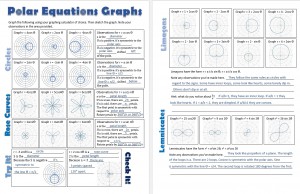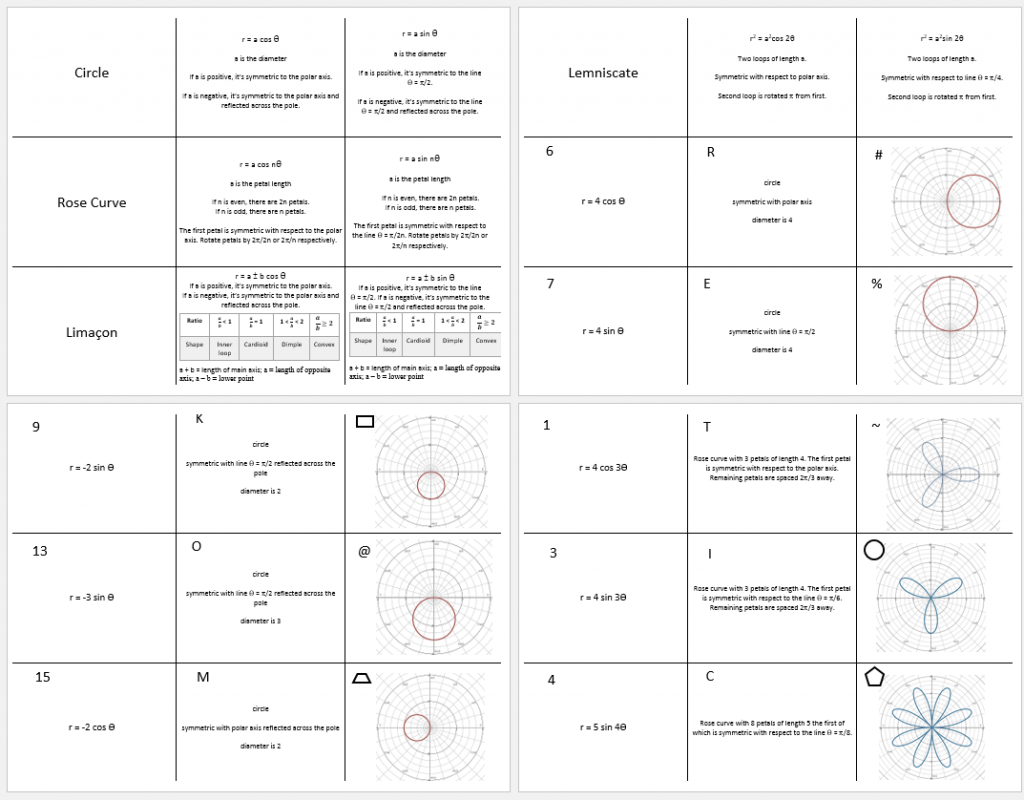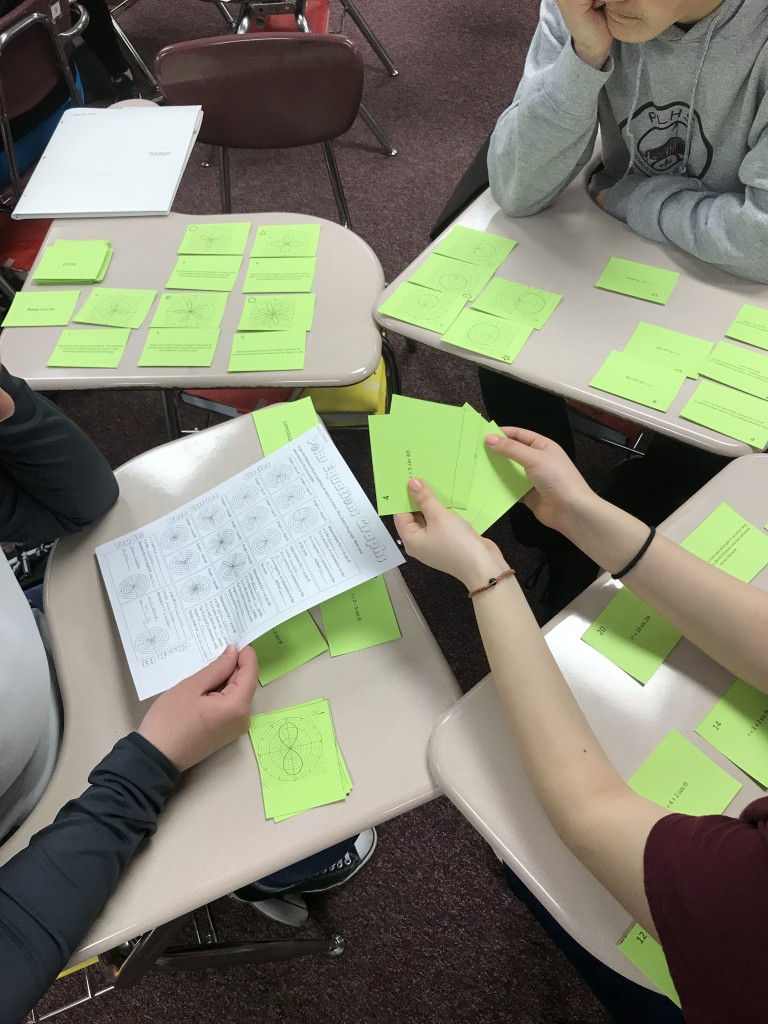Cindy Johnson’s Conic Cards are the inspiration behind Polar Cards. How she took the time to create 8 decks of conic cards is beyond me, but my students loved and learned from them.
In my classroom, my students first perform a Polar Graphs Investigation. This helps them explore the graphs of the polar equations they will be responsible for and helps them look for patterns and make inferences.
Because they have used Conic Cards the previous chapter, they know the drill, choose groups and start sorting. They refer to their investigation from the previous day if they get stuck.
Print and make copies of each of the four decks of Polar Cards on colored card stock. I allow groups of 2 – 4 students. Cut the cards out and give one set to each group asking them to sort the cards and verify with one another that they are sorted correctly. Each deck contains 4 types of cards
- Graphs (5 each of 4 polar equations)
- Equations (5 each of the 4 types of equations)
- Information (5 each of the 4 types)
- Formula/Title cards to aid in classifying/organizing
After a practice round, I give them the key to their card set so they can check their group’s work. Once they have gone through the sort on at least two days, they take the Polar Card Test as a group for a group grade. The Polar Card Test is included as a Word document, so you can modify the colors as needed based on the card stock colors you use.





I’m currently taking Calculus 3 as a math major at UTSA and I just wanted to say that the page teaching the different kinds of graphs is extremely helpful and easy to understand! But I think it would be better if it included cardioids.
I’m glad they are helpful! Cardioids are part of the limacons group.